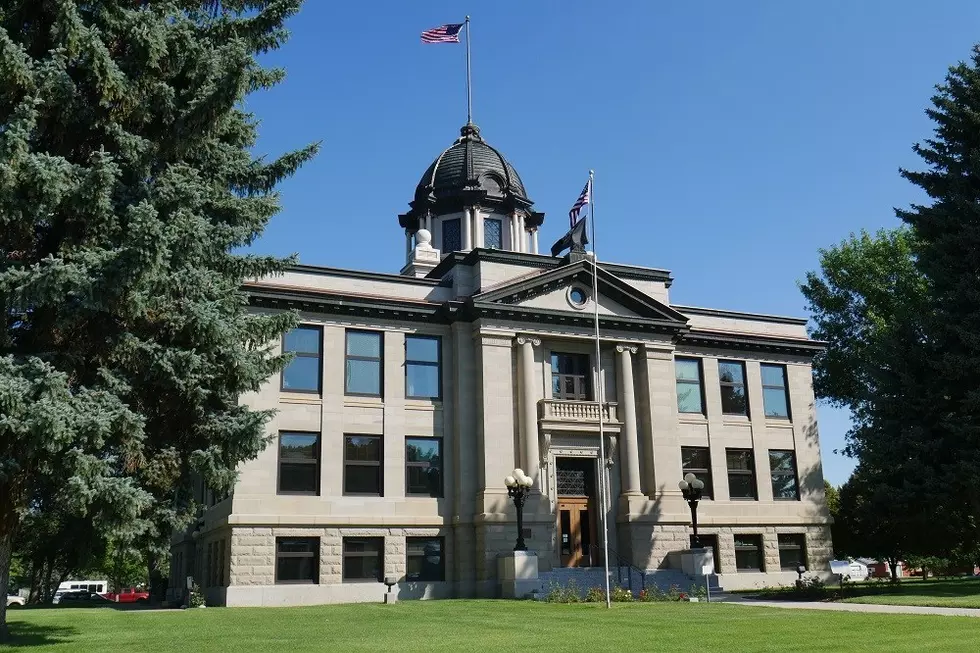
Courthouse drama and floods in a rural Montana town
(CN) The rundown cafe in the middle of modest Main Street didn’t look like a county courthouse, but Google Maps insisted, and the picture on my phone matched.
But that copper dome in the distance appeared like the top of many grand old courthouses. Ignoring the insistent navigator, I continued down the street.
An hour and a half east of Billings and two hours from the North Dakota border, the area around Forsyth is rural even by Montana standards. The rolling hills outside town were lush on this July morning after a wetter than usual and so far wildfire-free summer.
An old man in a weathered pickup trick sat at the stop sign when I arrived at the cross street. He smiled at me, raised his tanned left arm and waved me through.
I smiled and waved back as I crawled through the intersection. He smiled and waved again.
The large, manicured lawn beckoned from beyond the end of the last block of buildings in downtown Forsyth. I parked under a large tree that offered ample shade, grabbed my camera and walked to the main entrance to confirm that this was the courthouse.
Spoiler alert: It was.
The most impressive building I saw during my short visit, a financial scandal more than one hundred years ago almost left the courthouse partially built.
In 1911, local citizens passed a $125,000 bond to fund the construction of a new building to replace the wood-frame former schoolhouse that served as the original courthouse.
The well-received design by Montana architects Link and Haire called for a colossal portico and octagonal tower topped by a copper dome. Not until after construction was underway did locals discover the project was more than $40,000 over budget.
The editor of the Forsyth Times-Journal blasted the overrun in a story and sued the county commissioners to stop further expenditure.
Worried that his company wouldn’t be paid in full, the foreman in charge of construction refused to turn over the keys when the building was completed, despite a court order, going so far as to locking himself inside and hiding between the ceiling and roof.
A grand jury ultimately vindicated the commissioners and the foreman handed over the keys and left.
The jury found the design “imposing and attractive” and its interior “very harmoniously and artistically decorated” and further decided the county had received “full value for the money expended.”
The firm ended up designing courthouses for 18 of the state’s 56 counties.
The building survived a major flood in 1918 when a levee constructed over 36 hours by more than 500 men gave way to the rising waters of the Yellowstone River.
Several inches of water accumulated on the first floor of the new building, causing the main sewer pipe to burst. Residents used boats to get around town.
Within a week of the waters receding citizens met to discuss installing new water and sewer systems, a levee and sidewalks, but construction on the levee didn’t start until 1944 and wasn’t completed until 1948.
The levee is approximately two and a half miles long and surrounds the city on the north and west sides, separating it from the river.
At the time of my visit, recent heavy rain threatened to overflow rivers throughout the state, but Forsyth needn’t worry.
After snapping a few pictures, I returned to my car to drop off my camera. An old man in a rusty bike waved as he rode past. A woman in a yellow dress with a floral pattern on it embraced another woman who had yelled at her from down the block.
As I approached the main entrance to the building a man walking his dogs waved and said hi. A young mother with a small toddler did the same.
The time had arrived to start the first day of training for the new reporter, but I hadn’t seen her yet. I began to wonder if she too had been led astray by Google Maps when my phone rang.
“I’m at what Google says is the courthouse, but I really don’t think this cafe is it,” she said.
I admitted to having fallen to the same ruse and told her to drive another couple blocks to the building with the big dome.
“You won’t miss it, believe me,” I told her.
The woman in the bright dress walked up the courthouse steps, a bag of food slung over her shoulder, followed soon by the reporter.
When we arrived in the clerk’s office, the woman in the bright dress invited us to view the new cases from a computer terminal behind the counter. Old-school access, as my boss likes to call it.
Though only a little more than 10,000 people call Rosebud County home, its most populous city Colstrip is home to a large coal mine and two coal-fired power plants.
The litigation reflected the community with two lawsuits filed against the Montana Department of Environmental Quality, one by the Sierra Club trying to stop the expansion of the coal mine and the other by a mining company trying to stop the power plant owners from transporting coal from Wyoming to feed the Colstrip power plants.
The clerks let us print all the pages we needed and told us to take the copies from the photocopier in front of their desks and tell them how many pages we printed.
Our work done, I took one last look at the grand old building before heading out of out of town, probably never to return.
We had more training to do in Hardin, a little more than an hour to the southwest, before returning to Billings, an old railroad town with an abundance of feral rabbits. But that’s another story for another time.
